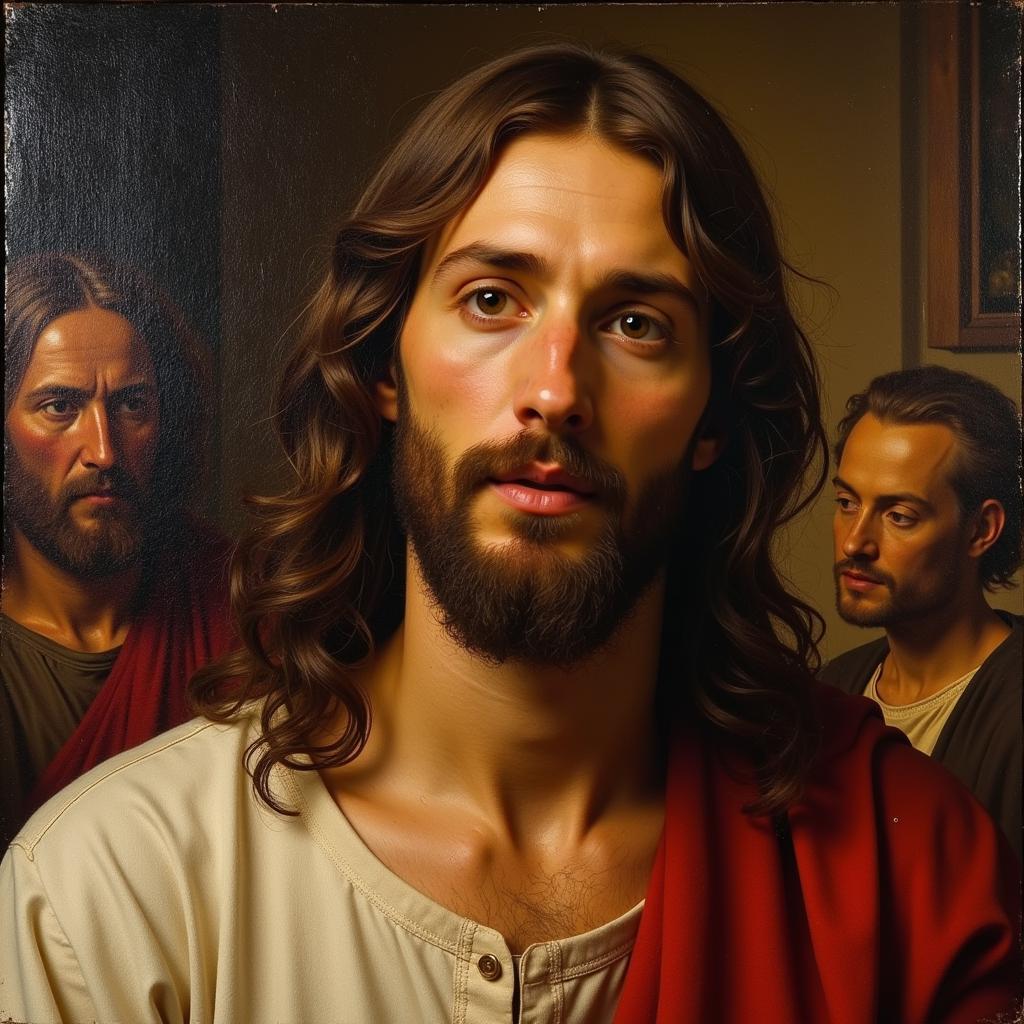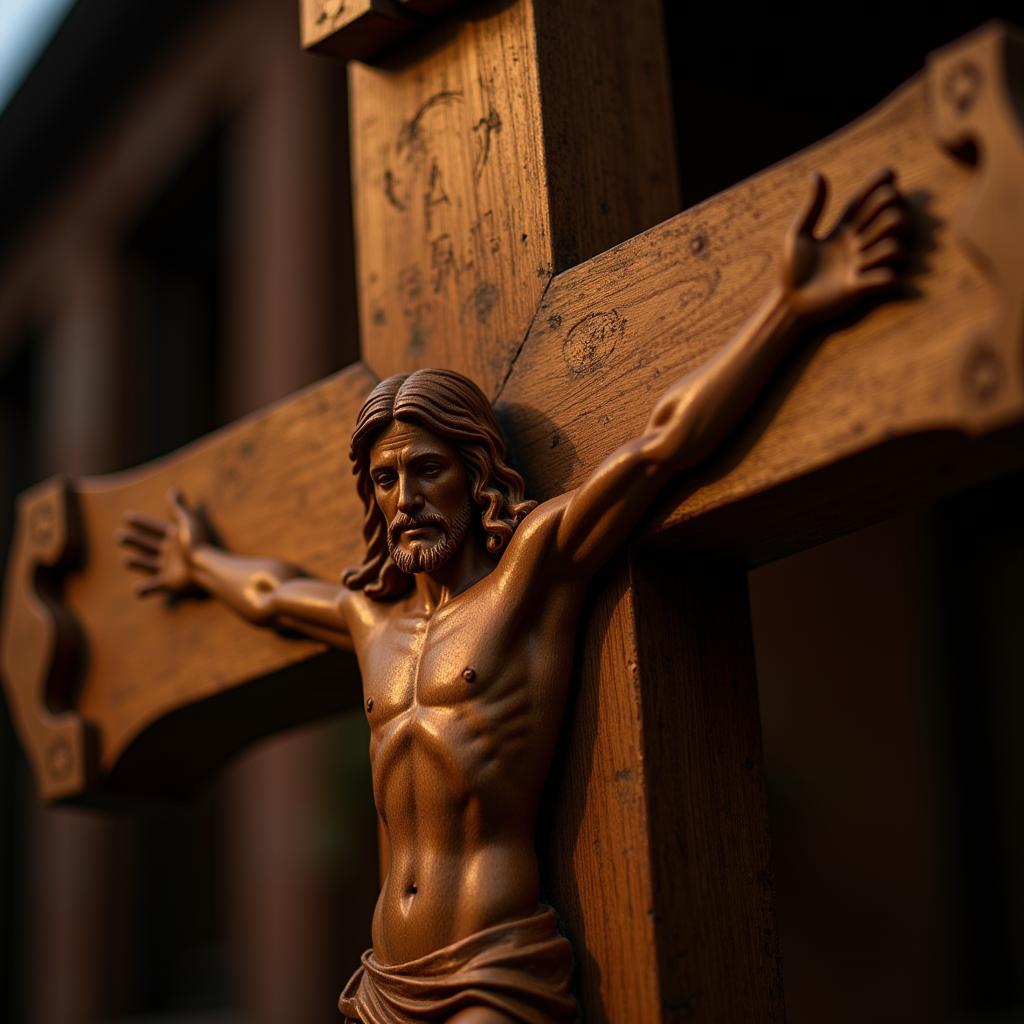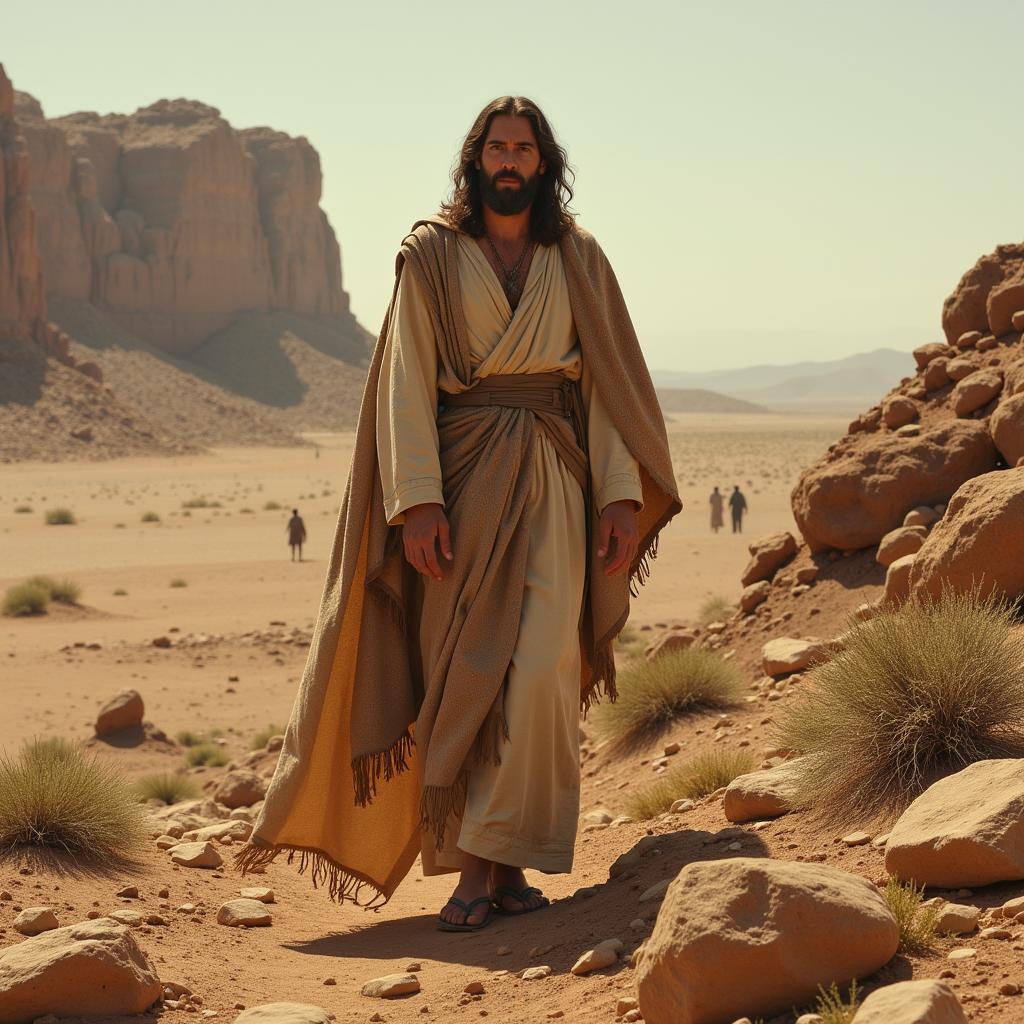Jesus and Art: A Divine Intersection
Jesus And Art have been intertwined for centuries. From ancient mosaics to Renaissance masterpieces and modern digital creations, the image and life of Jesus Christ have served as a profound source of inspiration for artists across diverse cultures and eras. This exploration delves into the multifaceted relationship between Jesus and art, examining its historical evolution, symbolic richness, and enduring impact on the human spirit. After the crucifixion of Jesus, art became a powerful tool for spreading the gospel.
Early Christian art, often found in the catacombs of Rome, utilized symbolic imagery to represent Jesus and his teachings. The fish, the anchor, and the good shepherd were common motifs, conveying messages of faith, hope, and salvation to a community facing persecution. These early depictions laid the foundation for the rich artistic tradition that would follow. The image of Jesus as the Good Shepherd resonated deeply, offering solace and guidance to believers. You can find some examples of this in jesus the good shepherd art.
The Evolution of Jesus in Art
The depiction of Jesus in art has transformed significantly over time, reflecting evolving theological interpretations, cultural shifts, and artistic styles. During the Byzantine era, iconic representations of Christ as the Pantocrator, the all-powerful ruler of the universe, became prevalent, emphasizing his divine nature.
Renaissance Representations of Jesus
The Renaissance witnessed a renewed interest in humanism, leading to a more naturalistic and emotive portrayal of Jesus. Artists like Leonardo da Vinci and Michelangelo captured the human vulnerability and spiritual depth of Christ in iconic works such as “The Last Supper” and the Sistine Chapel ceiling. These masterpieces not only showcased artistic brilliance but also fostered a deeper connection between viewers and the biblical narrative.
 Renaissance Depiction of Jesus Christ
Renaissance Depiction of Jesus Christ
Modern and Contemporary Interpretations
Modern and contemporary artists have continued to engage with the image of Jesus, often challenging traditional representations and exploring new avenues of expression. From abstract interpretations to provocative social commentaries, modern art reflects the complexities and nuances of faith in a rapidly changing world. Some artists, like Yongsung Kim, have created unique and powerful representations of Jesus. You can explore more of his work by visiting yongsung kim jesus art.
The Symbolism of Jesus in Art
Beyond mere representation, artistic depictions of Jesus are imbued with rich symbolism. The halo, the cross, and the wounds of the crucifixion are powerful visual cues that communicate his divinity, sacrifice, and triumph over death. These symbols resonate deeply with viewers, evoking a sense of awe, reverence, and spiritual contemplation.
The Halo: A Symbol of Divinity
The halo, often depicted as a circle of light surrounding Jesus’s head, signifies his holiness and divine nature. Its radiant glow sets him apart from ordinary mortals, emphasizing his role as the Son of God.
The Cross: A Symbol of Sacrifice
The cross, the instrument of Jesus’s crucifixion, serves as a potent symbol of his sacrifice for humanity. It represents the ultimate act of love and redemption, reminding viewers of the profound depth of his compassion.
 Symbolism of the Cross in Jesus' Art
Symbolism of the Cross in Jesus' Art
Modern Art and Symbolism
Even in modern art, where traditional iconography may be less prevalent, artists often employ subtle symbolic language to convey deeper meanings related to faith, spirituality, and the human condition.
How Did Jesus Heal Art?
The arrival of Christianity had a profound effect on art. Before Jesus, much of art revolved around pagan gods and goddesses or the glorification of emperors. With the rise of Christianity, art found a new focus: telling the stories of the Bible and celebrating the life of Jesus. This shift in subject matter also brought a change in style. The focus shifted from idealized representations to a more realistic and human portrayal of figures. This healing can also be seen in the subject matter’s exploration of compassion, suffering, and redemption—themes previously not explored in such depth. Discover more about this transformation in jesus heals art.
Why is Jesus Important in Art History?
Jesus is a pivotal figure in art history because his image has inspired countless artists for over two millennia. His life, teachings, and sacrifice have served as a central theme in Western art, shaping its development and influencing diverse artistic movements. The depiction of Jesus has evolved over time, reflecting changing cultural values, religious interpretations, and artistic styles. Exploring the portrayal of Jesus in art offers a unique lens through which to understand the intersection of faith, culture, and artistic expression. Images of Mary and Jesus are also prominent in religious art. Learn more about their depiction by exploring mary and jesus art.
What about Jesus in the Desert in Art?
The depiction of Jesus in the desert is a recurring theme in Christian art, representing his 40 days of fasting and temptation. This period of isolation and spiritual struggle serves as a powerful symbol of human vulnerability and the battle against temptation. Artists often portray Jesus in a barren landscape, emphasizing the harshness of the environment and the intensity of his inner turmoil. Explore different artistic interpretations of this pivotal moment in jesus in the desert art.
 Jesus in the Desert Art
Jesus in the Desert Art
Conclusion
Jesus and art remain deeply interconnected. From early Christian symbolism to contemporary expressions, the image of Jesus continues to inspire, challenge, and provoke dialogue. By exploring the diverse ways in which artists have engaged with this enduring figure, we gain a deeper appreciation for the power of art to express the complexities of faith, spirituality, and the human experience.
FAQ
- What are some of the earliest depictions of Jesus in art?
- How did Renaissance artists portray Jesus differently from earlier periods?
- What is the significance of the halo in Christian art?
- How do modern artists interpret the image of Jesus?
- What are some common symbols associated with Jesus in art?
- Why is Jesus in the desert a popular theme in Christian art?
- Where can I find more information about the intersection of Jesus and art?
Need assistance? Contact us 24/7: Phone: 02462573573, Email: [email protected] or visit us at Savico Megamall, 7-9 Đ. Nguyễn Văn Linh, Gia Thụy, Long Biên, Hà Nội 10000, Việt Nam.


